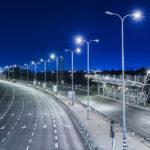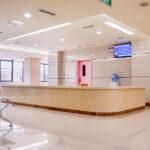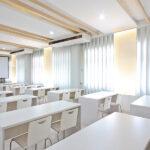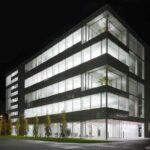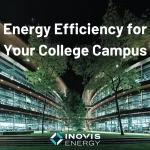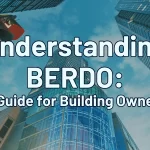Energy Recovery Ventilator (ERV) Systems
Home » Solutions » HVAC Upgrades » Energy Recovery Ventilator (ERV)
An energy recovery ventilator (ERV) improves indoor air quality while reducing HVAC energy use by capturing heat and moisture from exhaust air and transferring it to incoming fresh air. Ideal for commercial buildings, ERVs allow high ventilation rates without high energy costs.
Table of Contents
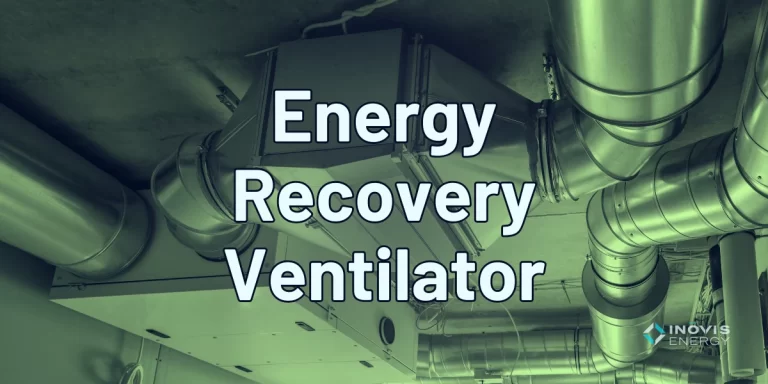
What Is an Energy Recovery Ventilator?
An energy recovery ventilator (ERV) is a mechanical ventilation system that exchanges heat and moisture between outgoing stale air and incoming outdoor air. These systems are essential in commercial buildings where fresh air is required to meet code or maintain occupant health, but where conditioning that air can be expensive.
ERVs use a core heat exchanger to transfer thermal energy and humidity between the exhaust and intake airstreams. In winter, they preheat and humidify incoming cold air. In summer, they pre-cool and dehumidify incoming hot air. This reduces the workload on the HVAC system and improves building comfort and air quality.
ERVs are used in new construction and retrofit projects across sectors such as education, healthcare, office, and multifamily buildings.
Benefits of Commercial ERV Systems
-
Lower HVAC Energy Costs – Reduces heating and cooling demand from outdoor air
-
Improved Indoor Air Quality – Brings in fresh air without uncomfortable temperature swings
-
Humidity Management – Helps control moisture levels in all seasons
-
Supports LEED, WELL, and ESG Goals – Demonstrates commitment to health and sustainability
-
Customizable for Retrofits or New Builds – Flexible configurations for most HVAC designs
-
Qualifies for Utility Rebates – Recognized as an energy-saving measure by many programs
-
Works with Existing Ductwork or DOAS – Can integrate without a full system overhaul
How Does ERV Work?
-
Winter: Exhaust air transfers heat and humidity to cold incoming air, reducing heating demand.
-
Summer: Exhaust air absorbs heat and moisture from incoming air, reducing cooling and dehumidification needs.
-
Core Technology: Heat and moisture are exchanged via a rotating enthalpy wheel or fixed-plate membrane without mixing air streams.
-
Operation: ERVs can be standalone units or integrated into rooftop units, DOAS systems, or air handlers.
ERVs maintain ventilation requirements while reducing energy loss — a win for both compliance and sustainability.
How ERV Systems Save Energy
Energy recovery ventilators reduce HVAC system energy use by recovering up to 70–80% of thermal energy from exhaust air.
-
Lower Heating & Cooling Loads: Less energy is needed to bring fresh air to desired indoor conditions.
-
Reduced Equipment Runtime: HVAC systems cycle less often due to reduced demand.
-
Smaller Equipment Sizing: Pre-conditioning air allows right-sized HVAC designs.
-
Humidity Stabilization: Minimizes need for additional humidification or dehumidification equipment.
-
Supports 24/7 Ventilation: Delivers fresh air with less energy, even during unoccupied hours or in humid climates.
Savings vary by climate but are most significant in regions with extreme outdoor temperatures or high ventilation requirements.
Related Facilities
ERVs are best suited for:
-
Buildings with tight envelopes or mechanical-only ventilation
-
Properties with high occupant density (e.g., classrooms, open offices)
-
Facilities in extreme climates needing air pre-conditioning
-
Public buildings with IAQ and sustainability mandates
Our ERV Installation Process
-
Ventilation Load Assessment – Determine fresh air requirements and system compatibility
-
System Design – Select ERV type (core or wheel), placement, and airflows
-
Equipment Selection – Choose appropriate size, efficiency rating, and controls
-
Installation & Integration – Connect with ductwork, rooftop units, or standalone systems
-
Testing & Commissioning – Verify energy transfer, balance airflows, and confirm code compliance
-
Optional Monitoring – Integrate with BMS for performance tracking
Ways to Pay for ERV Systems
-
Utility Incentives – Available for HVAC optimization and energy recovery retrofits
-
Public Sector IAQ Funding – ERVs qualify under indoor air improvement grants for schools and government facilities
-
Custom Incentive Modeling – Inovis calculates ROI and applies for available rebates on your behalf
-
Bundled Project Financing – Combine ERV installation with broader HVAC upgrades for total savings
Improve Air Quality and Cut Energy Costs
Ready to improve your building’s ventilation without driving up energy bills? Inovis can design and install the right energy recovery ventilator system for your facility.

